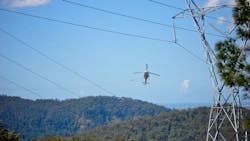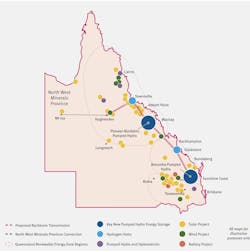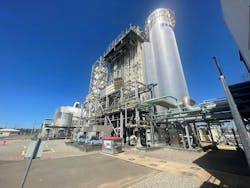Australia is a vast landmass. It is about 2500 miles (4023 km) between Perth on the West Coast to Brisbane in the East. Population centers are so far apart that grid infrastructure is largely localized. Even within states like Queensland, the transmission network weakens when moving away from the Brisbane metro area in the south. Towns to the north, like Cairns and Townsville, are around 1000 miles (1609 km) away. It is another 500 miles (805 km) to the rich mining area of Mount Isa to the West, and that is still not at the border with neighboring Northern Territory.
Transmission strength has been a problem for years. Now, it finally is getting the attention it deserves as part of the Queensland SuperGrid. This initiative is largely in response to the build-out of renewables. Generation from renewables has doubled over the past decade and currently accounts for around 30% of the state’s total electricity generation. Many more large-scale solar and wind generation projects are either under construction or in the development stage.
The state’s goal is to switch from 70% coal generation in 2023 to 70% renewables by 2032. That is only attainable if the transmission network gets an overhaul. As such, 8.1 GW of coal is being phased out with 25 GW of large-scale wind and solar, 7 GW of rooftop solar, 3 GW of battery storage and 6 GW of pumped hydro storage (PHS). To boost system stress, add stability to the grid and compensate for lack of reactive power, the plan includes repurposing aging rotating assets to operate as synchronous condensers (SCs).
“Australia needs strong grids to meet its 2030 decarbonization goals,” said Darren John Garwood, head of field sales Pacific region, gas services, Siemens Energy Inc. “RATCH Australia’s Townsville power station in northern Queensland will contribute to grid stability by converting its gas turbine and generator to a hybrid rotating grid stabilizer. It can instantly switch from power generation to grid stabilization mode, preventing potential blackouts.”
Three Upgrade Zones
The conversion project has been split into three Queensland renewable energy zones (QREZ), and work is already underway. The first phase involves adding four new high-voltage (up to 500-kV) backbone transmission projects to connect 6 GW of new renewable capacity. Additionally, two PHS facilities totaling 2 GW will store excess renewable energy for demand centers on the coast.
For example, the northern town of Townsville is getting a 466-mile (750-km), 500-kV line to connect it to a new PHS plant and larger load centers to the south. Farther inland to the west of Townsville lies the 20-MW Hughenden solar farm, which is earmarked for expansion with a 5-GW wind farm. Another 230-mile (370-km), 500-kV line will be required to bring that energy to where it is needed. In addition, tentative plans consist of extending these lines to connect Mount Isa where mining operations can take advantage of Hughenden’s output.
The Australian Renewable Energy Agency (ARENA) recognizes the consequences of retiring massive amounts of coal generation and downgrading natural gas combined cycle units to peaking operation. To address these challenges, ARENA aims to improve system strength and inertia services while expanding the transmission network.
“Retirement of fossil-fuel generation, particularly large coal-fired power stations, is projected to reduce both system strength and inertia,” according to a June 2023 ARENA report. “The international energy transition and adoption of more inverter-based renewable generation is driving international demand for large SCs. One possible solution is to convert existing fossil-fueled generators, which are synchronous machines, into SCs. At face value, this should provide a cost-effective way of providing the required security services.”
Three-Pronged Approach
The agency believes repurposing generators as SCs is an economical way to provide system strength, add inertia, provide reactive power for voltage control and reduce the number of faults. Modeling by grid operator Powerlink Queensland and analysis from consultancy Ernst & Young LLC supported ARENA findings. As a result, Powerlink and the Australian Energy Market Operator (AEMO) are embarking on a series of projects to support ongoing transmission upgrades. The grid operator has adopted a three-pronged approach:
1. Adding more battery energy storage systems (BESS) to store excess renewable energy for use when the wind is not blowing or the sun is not shining and take some stress off the grid at times of high renewable output
2. Introducing at least two new stand-alone SC machines at a cost of around US$80 million each
3. Converting gas turbines into SCs — about half the cost and half the lead time of new SCs. Some of these turbines will be brand new (Queensland is adding 3 GW of new gas turbine plants as part of its SuperGrid) while other turbines are aging units that have typically seen their hours of operation downgraded from baseload to the provision of peaking power when needed.
Townsville Upgrades
Australian utility RATCH owns a power station in Townsville, Queensland, that lies at the intersection of much of the expansion called for in the SuperGrid. As more renewable energy floods onto the grid, the Townsville power station (TPS) is likely to see far fewer hours of operation, severely curtailing revenue.
Transmission operator Powerlink, RATCH and Siemens Energy Inc. concluded the best way forward for the plant was to add in SC services by converting its 160-MW Siemens Energy SGT5-2000E gas turbine to perform dual operation. By adding a clutch from SSS Gears Ltd. of the UK between the turbine and generator, it could generate power when called for by the grid and otherwise deliver system strength services. This also turned out to be the least-cost option to keep the grid more stable in the region.
The hybrid rotating grid stabilizer (RGS) upgrade package from Siemens Energy is scheduled during a major outage in 2025. It entails a thorough inspection of the gas turbine to replace or repair any needed components, a tapered air-inlet design to facilitate machinery upgrades, extending the foundation, a new cooler, new lube oil tanks and installation of a synchro-self-shifting (SSS) clutch between the gas turbine and its generator.
In normal peaking operation, the clutch is engaged, and the gas turbine drives the generator to produce power for the grid. In synchronous condensing mode, the SSS clutch is disengaged, allowing the generator to rotate at 3000 rpm without the gas turbine to provide inertia, voltage control, short-circuit power and other grid stabilization services for the network. Its short-circuit contribution will be between 350 MVA and 400 MVA, and its electrical inertia will be around 250 MW sec. When TPS uses the SSS clutch to switch to power generation mode, it can provide about 1000 MW sec.
“The hybrid RGS conversion works primarily because of the clutch that is installed between the gas turbine and the generator,” said Stanley Wilson, manager, large gas turbines service, Siemens Australia. “This allows the unit to operate in two modes: As a generator and also as a synchronous condenser while the guest turbine is shut down, not costing money to operate. Using existing infrastructure makes the upgrade much cheaper and faster to implement.”
About the Author
Drew Robb
Drew Robb has been a full-time professional writer and editor for more than 25 years. He currently works freelance for a number of IT and engineering publications. He was also the editor-in-chief of an international engineering magazine for more than a decade. He has been published in Power Magazine, Turbomachinery International, EnergyTech, T&D World, The Writer, eSecurityPlanet, Small Business Computing, Wind Power Monthly, Writer’s Digest, Forbes, Denver Post, The Economist, Computerworld, Information Week, HR Magazine, World Trade and countless others. Born and raised in Scotland, he has a degree in geography/geology from the University of Strathclyde, United Kingdom. He now lives in Florida.


